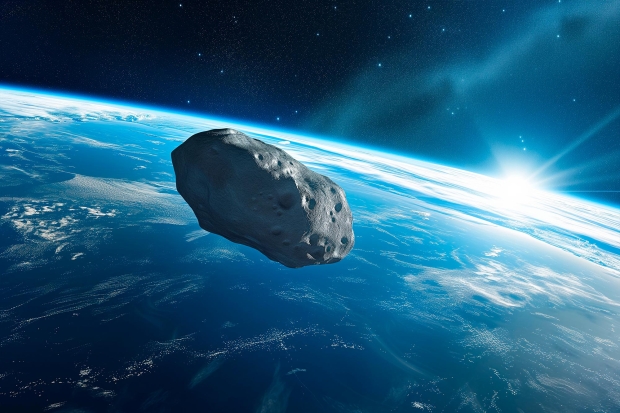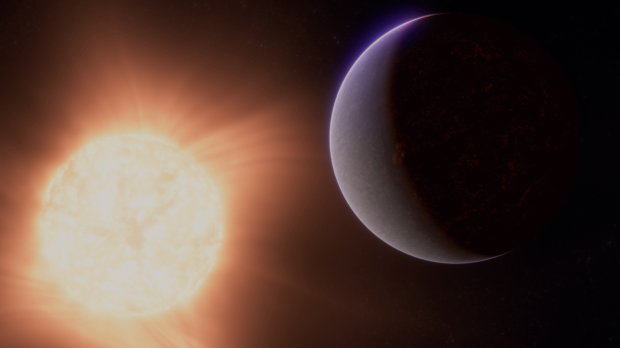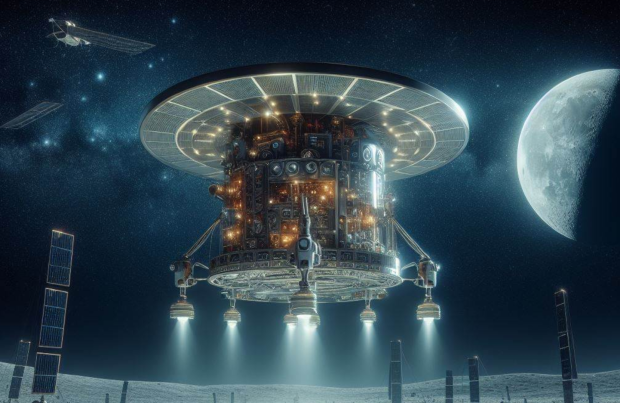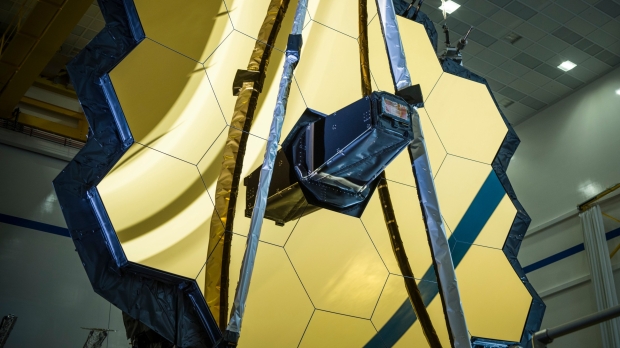Science, Space, Health & Robotics News - Page 1
NASA confirms 1,000-foot-wide 'God of Destruction' asteroid will approach Earth
By the end of the decade an asteroid that measures approximately 1,000-foot-wide will approach Earth, and this asteroid has been named after the Egyptian god of chaos and destruction.
The closest approach of the asteroid called Apophis will occur on April 13, 2029, and due to its incredible size and close proximity to Earth, a safe but extremely close 30,000 miles, skywatchers will be able to observe the asteroid with the naked eye. Apophis has been at the top of the European Space Agency's (ESA's) "impact risk list" of potentially hazardous asteroids (PHAs) and NASA's Sentry Risk Table for 17 years, but further analysis by NASA determined it won't hit Earth for at least the next 100 years.
So, what's the big deal? NASA plans on using the close approach of Apophis as an opportunity to learn more about near-Earth asteroids, and space rocks in general, as Apophis formed around the same time the as the planets, making its material extremely valuable to researchers that want to piece together the long evolution of the solar system.
NASA discovers atmosphere around rocky planet outside our solar system
NASA has taken to its website to highlight a "rocky" planet approximately 41 light-years from Earth within the constellation Cancer.
That planet is called 55 Cancri e, and is referred to as a super-hot super-Earth exoplanet by researchers as it has a diameter twice that of Earth and has a composition similar to our planet's. As for super-hot, 55 Cancri e orbits its host star at approximately 1.4 million miles, or about one-twenty-fifth the distance between Mercury and the Sun. Due to its extremely close proximity, 55 Cancri e is believed to be tidally locked to its star, meaning only one side of the planet is facing the host star - exactly how from Earth we can only see one side of the Moon.
NASA's James Webb Space Telescope (JWST) pointed its sensitive infrared images at the planet and measured the light coming off it. By measuring the light researchers are able to determine what elements are present in the atmosphere, and the first indication 55 Cancri e could have a substantial atmosphere came from temperature measurements, or the heat energy given off in the form of infrared light.
Continue reading: NASA discovers atmosphere around rocky planet outside our solar system (full post)
NASA highlights photo of the Moon that took two months to capture
Astrophotography can be really easier and really difficult, and sometimes the most difficult attempts at capturing the cosmos pay off immensely. This is one of those examples.
Astrophotographer Betul Turksoy captured what is called an analemma, which is a figure 8 curve that is created from the elliptical curve of the Moon. Where it gets difficult is the requirements to take the above photograph. The above photograph was featured on NASA's Astronomy Picture of the Day on October 10, 2022, where it's explained to capture an analemma, typically of the Sun, the camera needs to be planted in a single spot and the time of the time of the Sun marked for the first photograph. Then, take a photograph at the same time each day for one year.
However, a Moon analemma comes with some caveats. According to NASA, on average, the Moon returns to the same position in the sky about 50 minutes and 29 seconds later each day, which means to achieve a true Moon analemma, every photograph needs to be taken 50 minutes 29 seconds later each day. The duration of the photography bout will be one lunar month. Due to the above taking two months to capture, it technically shows a double lunar analemma.
Continue reading: NASA highlights photo of the Moon that took two months to capture (full post)
NASA reveals plans to build levitating robots on the surface of the Moon
NASA has taken to its website to reveal some brief plans for constructing the first levitating robot on the surface of the Moon.
NASA's Jet Propulsion Laboratory has proposed plans to construct the first lunar railway system, which will be designed to provide reliable, autonomous and efficient payload transport between locations on the surface of the Moon. The space agency has proposed developing FLOAT, or Flexible Levitation on a Track, which is a system that uses magnetic robots that levitate over the track.
How is this possible? NASA explains the track will be comprised of three layers: a graphene layer that enables robots to float above it using diamagnetic levitation, a flex-circuit layer to generate electromagnetic thrust to move the robots along the track, and an optional, but preferable solar panel layer to catch any sunlight. The additional benefits of FLOAT is the robots won't be touching the track, which minimizes the chance of wear and tear.
Neuralink confirms its first human brain chip patient experienced a malfunction
Neuralink has posted an update on its first human patient to receive a brain implant, saying within the first weeks after the medical procedure a problem presented itself.
For those that don't know, Neuralink is Elon Musk's brain implant company that has constructed a brain-computer interface (BCI). With this new piece of technology, Neuralink believes it will be able to help people suffering from diseases such as paralysis by enabling control of a device with the patient's thoughts. The first paralysis patient to receive the BCI was 29-year-old Nolan Arbaugh, who was shown controlling a desktop mouse cursor and even playing video games such as Mario Kart.
Despite this achievement, Neuralink details a malfunction that occurred with Arbaugh's BCI, with the company writing the brain chips "threads" that are thinner than human hair and record neural signals. These threads, unfortunately, began to retract from Arbaugh's brain. Neuralink's system called Link records neural signals using 1,024 electrodes that are spread across 64 threads. With fewer electrodes to monitor brain signals, Neuralink was prevented from accurately measuring Link's speed/accuracy.
Scientists announce breakthrough discovery of a whale 'alphabet'
Researchers have penned a new study called the "Contextual and Combinatorial Structure in Sperm Whale Vocalizations" and it details a new "alphabet" that has been discovered.
Scientists from MIT CSAIL and Project CETI state they have developed a breakthrough in understanding cetacean communication. Notably, cetaceans include the following species: whales, dolphins, and porpoises. So, what did they do? The team took what is called codas, which are a series of different linguistic vocalizations that have been studied for decades, and applied machine learning technologies to decipher what is being "said."
According to reports, the research took 8,719 sperm whale codas there was collected by researcher Shane Gero from time spent off the coast of Dominica, a small Caribbean Island, and applied them to a machine learning algorithm while also factoring in contextual details through implementing music terminology.
Continue reading: Scientists announce breakthrough discovery of a whale 'alphabet' (full post)
NASA supercomputer releases video of an astronaut falling inside a black hole
NASA Goddard has taken to its YouTube channel to share an incredible visualization of what it would look like to fall into a supermassive black hole.
The space agency explains via the description of the video that a NASA supercomputer was used to create a scenario where a camera, or as NASA put it, "a stand-in for a daring astronaut," was placed within the orbit of a supermassive black hole. The camera orbits the supermassive black hole, pulled in by its intense gravity, and then passes the black hole's event horizon.
The space agency explained that the supermassive black hole within the visualization is approximately 4.3 million times the mass of our Sun, and the entire video was created using the Discover supercomputer at the NASA Center for Climate Simulation. The event horizon is the boundary around a black hole that light can no longer escape due to the gravity intense gravity of the astronomical object.
Scientists use supercomputer to find out when humanity will perish
A team of researchers asked a supercomputer when will humanity completely perish, and the answer they received not only impacts humans but hundreds of other species of mammals.
The researchers penned a study published in the scientific journal Nature Geoscience, where they explain that compiling factors such as solar radiation and landmass configurations, can lead to a prediction of when all landmass mammalian life will be eradicated from the surface of Earth. The team found that in as little as 250 million years Earth's tectonic plates will converge to form Earth's next supercontinent, Pangea Ultima.
The scientists write the creation and decay of Pangea Ultima will produce extreme levels of CO2, particularly from volcanic rifting and outgassing. The intense levels of CO2 in Earth's atmosphere combined with the heat of the Sun will make Earth unable to sustain many forms of landmass life. Within these kinds of conditions, humanity won't be able to grow any food, with the supercomputer finding that temperatures would increase to between 40 and 50 degrees Celsius, which is approximately 104 - 122 degrees Fahrenheit.
Continue reading: Scientists use supercomputer to find out when humanity will perish (full post)
World's most powerful space telescope tells the weather on planet light-years away
NASA's James Webb Space Telescope has pointed its extremely sensitive instruments at an exoplanet located 280 light-years away from Earth.
Researchers used the telescope's mid-infrared light spectrometer to map the weather patterns of an exoplanet known as WASP-43 b, a gas giant that is located in the Sextans constellation. The team published their findings in the journal Nature Astronomy where they explain that one side of the exoplanet is covered in thick cloud coverage, and the other side has clear skies. Additionally, the team found that WASP-43 b has equatorial winds that can reach speeds of up to 5,000 mph.
So, why is WASP-43 b so different from Earth? It's mostly due to its position relative to its host star. WASP-43 b orbits its host star at a distance of just 1.3 million miles, which results in the exoplanet becoming tidally locked with the star. When an astronomical object is tidally locked, there is continuous daytime and nighttime on specific sides of the object. An example of this would be the dark side of the moon.
Scientists discover 'cosmic glitch' in the universe in quest to solve space and time
Scientists have been scratching their heads at the expansion of the universe since it was discovered nearly a century ago, particularly applying fundamental theories such as Einstein's Theory of Relativity at a cosmic scale.
A new paper published in the Journal of Cosmology and Astroparticle Physics by a team of researchers from the University of Waterloo and the University of British Columbia in Canada details a new approach to applying the theory of gravity at the grandest scale possible. The team argues that Einstein's theory isn't enough to explain the accelerating expansion of the universe, as it applies traditional theories of gravity at a cosmic scale - astronomical objects such as galaxy clusters and beyond - the theory has inconsistencies.
The team called these inconsistencies with gravity a "cosmic glitch" and decided to make some alterations to Einstein's theory to accommodate the glitch. More specifically, the study's lead author and Waterloo mathematical physics graduate Robin Wen explained that at a cosmic scale, gravity becomes "around one percent weaker" and that the newly devised model that patches this cosmic glitch may be the first step in solving the cosmic puzzle of spacetime and its relationship at various scales.










